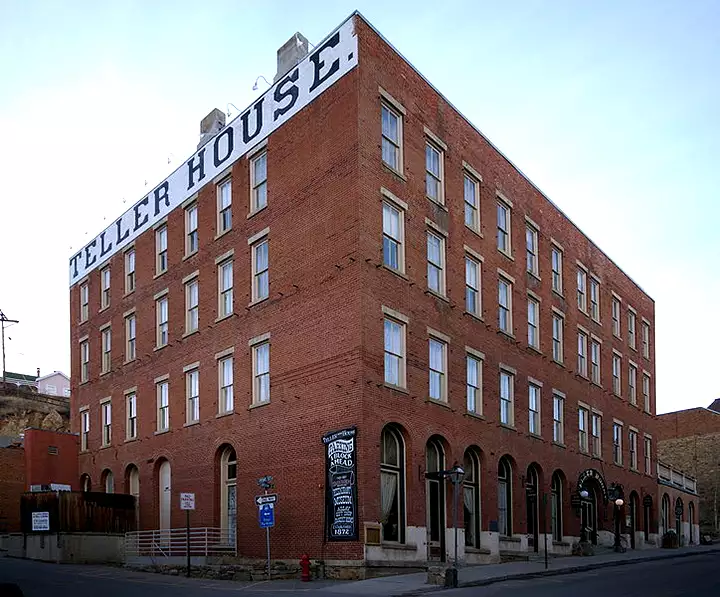Central City, Colorado

Teller House in Central City
John Gregory discovered gold in what became known as "Gregory Gulch" (between what is now Black Hawk and Central City) in 1859. Within a year, more than 10,000 miners had flocked to the area to work the many gold veins discovered through the hills and canyons around what was by then known as "Mountain City." For a while, that part of the greater mining camp that became known as Central City was also known as the "Richest Square Mile on Earth," servicing as it did the Gregory, Gunnell, Kansas, Bates and Burroughs veins, all major gold-bearing veins that were worked almost steadily for 50 years.
At first, all the efforts went into placer mining but those deposits soon ran out. Then folks turned to hard rock mining as they dug into the solid ground looking for the mother lode that had been feeding the placer deposits. By 1863, nearly all mining was underground and many of the miners attempted to form a union, looking for better wages and better working conditions. After much shooting and fighting, that effort failed: Miners unions saw virtually no success in Colorado for another 50 years. Those early days of the placer mining operations also saw a lot of Chinese workers in the Central City area. But as the Chinese were forbidden by law to work underground, many of them went back to China as the placer operations shut down.
By 1900, the population of Central City had been officially reduced to 3,114. Over the next 20 years, the population dwindled more as the ore veins played out and folks left town. Then mining essentially stopped until the price of gold was raised to $35 per ounce (from the previous $20) in the 1930s. But World War II again stopped the mining and it never recovered after that. By the 1950s Central City and neighboring Black Hawk were virtual ghost towns, with populations hovering around 100 each. Then limited stakes casino gambling was introduced to both towns in the early 1990s in an effort to revive their fortunes and to help to preserve their Victorian heritage and architectures. As Black Hawk was directly on the main highway through the area (SR 119, which further up the hill becomes the Peak to Peak Scenic Byway), Central City saw less casino construction and less business. Then the Central City casino operators got together with the town, the county and the state and built a 4-lane parkway 8.4 miles through the mountains from Interstate 70 to the south in an attempt to bring in more traffic without losing those potential customers to the casinos of Black Hawk. Central City also revised their building code to allow structures to now be built higher than 53 feet (the previous height having been set to stop construction of buildings higher than the original constructions in the downtown historic district). Today, Black Hawk has three times as many casinos and they generate more than seven times as much revenue as the casinos of Central City. That doesn't mean the folks in Central City don't try harder...